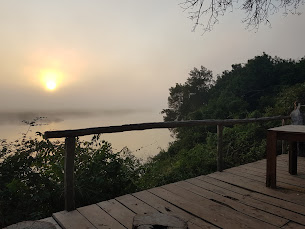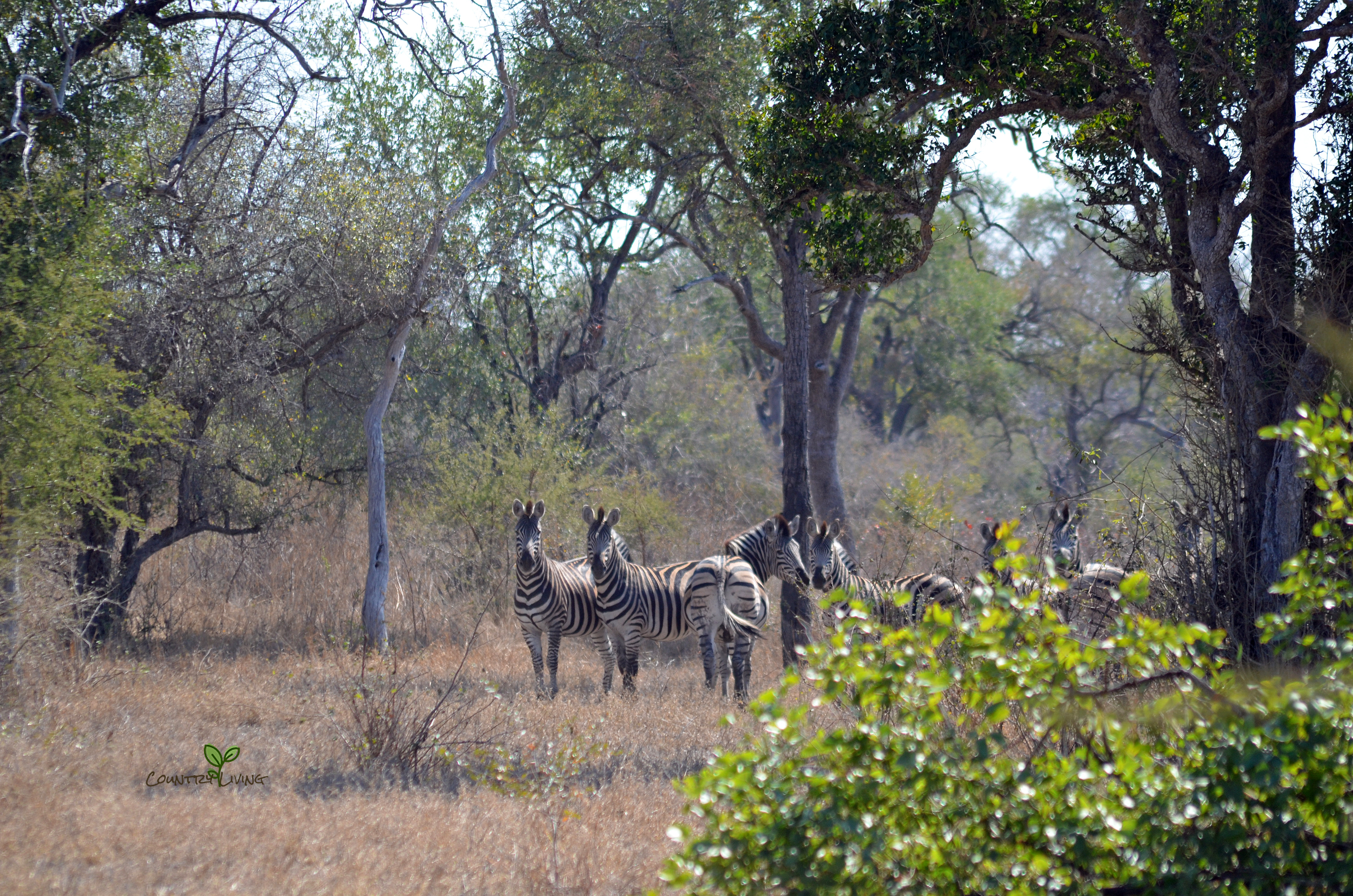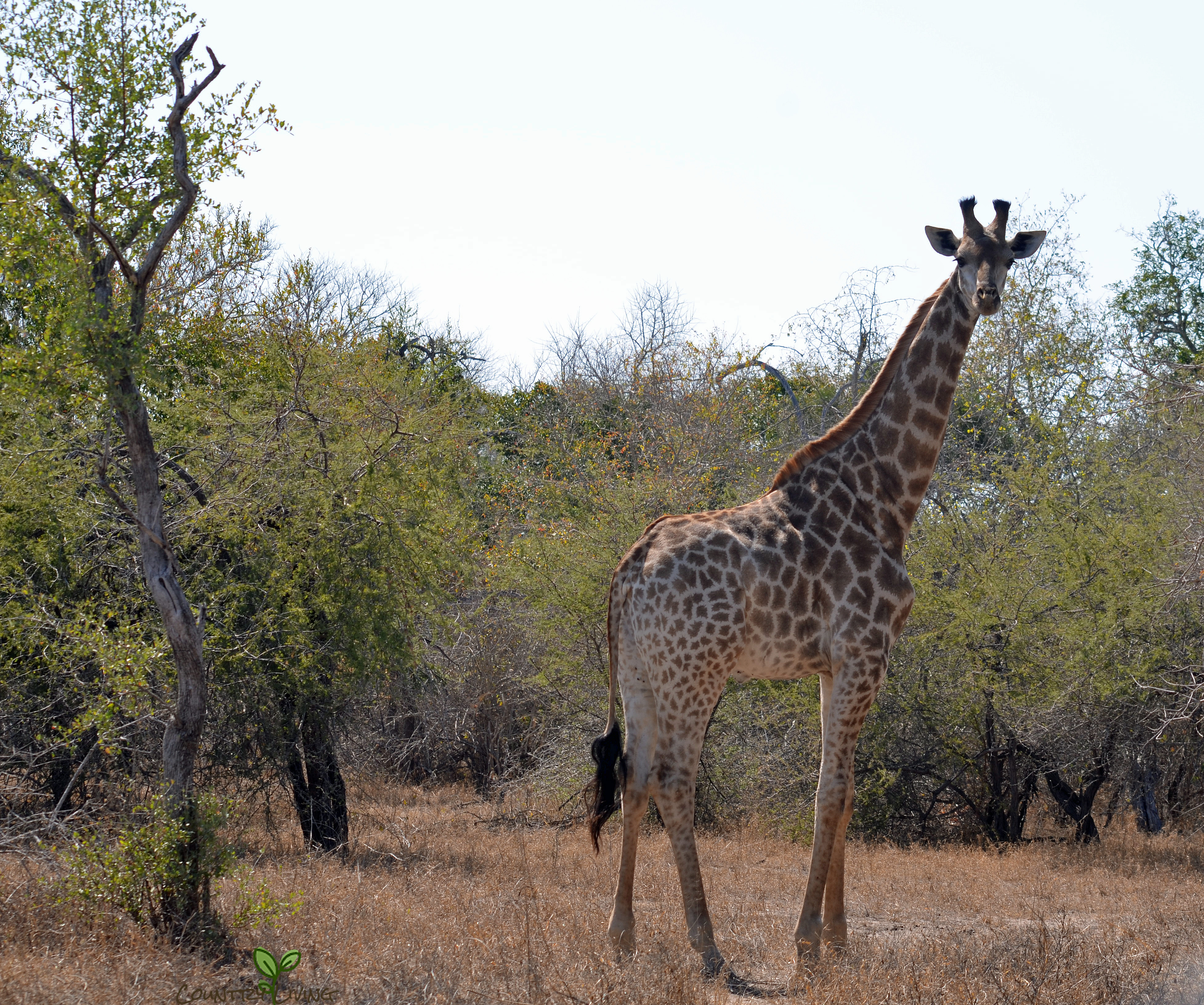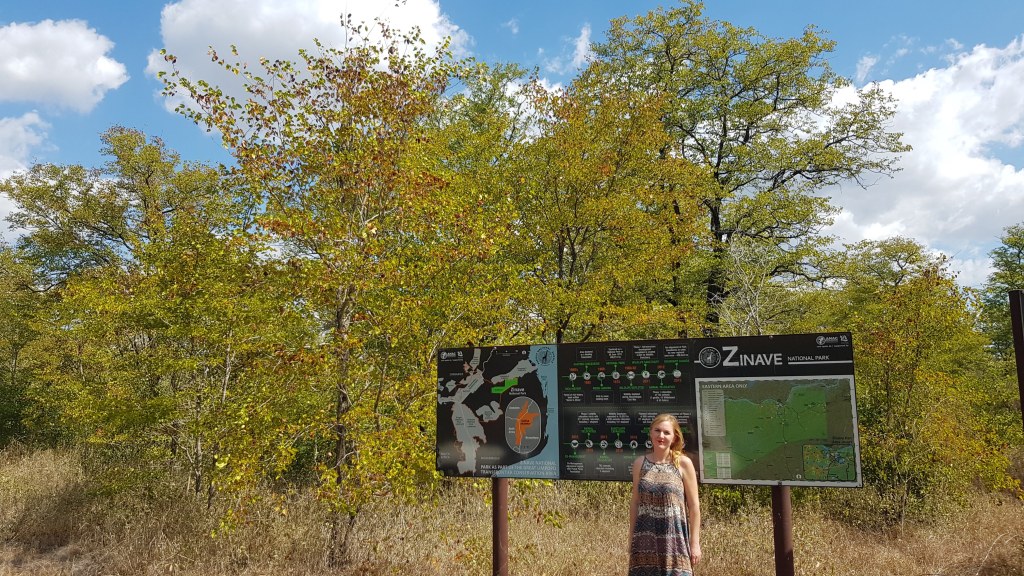I have been wanting to go to Zinave for a very long time, but I was not sure what to expect. The little bits of info I had, is that which I could find on peace parks website, a few Instagram pictures and an old Getaway article.
For those of you who don’t follow my blog or have never read any of my posts. My family, my husband, myself and our four-year-old daughter live in Mozambique on a cattle ranch in the Govuro district. We are more or less a three-hour dirt-road drive away from Zinave National Park. We decided to go there for one night for our first experience, but I would gladly have done two or more!
Driving there was a wonderful experience. As we drove there we suddenly found ourselves right in the middle of Mopane field, with massive Mopane trees and then something I have mostly ever seen growing in gardens and Kruger Park rest camps, wild Impala lilies flowering. We entered through the northern side from Pande past a village called Matata. There is no gate, but an official Zinave signpost indicates the entrance to the park. Shortly after entering the outer boundaries of the park, we saw a group of Ground Hornbills, unfortunately, they disappeared too fast to make sure of the exact number or take a photograph. I think there were six birds in the group. We also saw the most magnificent Baobab trees I have seen in a while and might I mention that I am surrounded by them at home… Driving on we saw signs of development and rewilding with a temporary game boma for release set up and we came across a dazzle of Zebras. The landscape is interesting and varying which isn’t something I really expected. There are low-lying areas around the pan and closer to the river which will clearly be either just water or a big muddy sludge in the rainy season. There are also areas with loads of Lala palms and if you are looking to tick a Lemon-breasted Canary from your bird list, this will be a great place to find them.
Zinave is currently in a rewilding stage and additionally focusing on community projects and anti-poaching. Tourists are welcome to come, but it is not their priority yet! Accommodation is very basic, rustic and if you want a rural national park experience this is ideal. You will need a high clearance vehicle with 4×4 capabilities to visit this all-dirt-road park.
The park is large, according to the Peaceparks brochure it covers 400,000 hectares and its northern border is the Save river. In the centre of the park, a temporary 18600 ha sanctuary was created where the rewilding will start and is planned to be opened up to the bigger park later when there are more security measures in place on the outer boundaries. According to the webpage impala, reedbuck, waterbuck, buffalo, zebra, wildebeest, sable and elephant are amongst the animals that have been released into the park. In the year 2020, a clan of four, Spotted hyenas have also been released in the park and a contact in the park said that they are doing well and has had a cub since. According to undisclosed sources, a vagrant male lion has also made its way into the sanctuary…
Below is the start of a lovely short series of clips available on YouTube which shows the process of relocation of the Spotted Hyena clan to Zinave. (By the way, I love a good hyena story, you can read why on the linked page here.)
There are currently three areas where you can stay over in the park. The main camp Tondo has basic facilities and at the others, Figtree pan camp and Leadwood camp you have to bring everything yourself. We had a quick look at the Leadwood campsite. There is a steel table, an open/half-sheltered area between some trees and a stack of wood. There used to be a campsite called Baobab, but it is situated out of the main sanctuary area and it is currently overgrown and not in use anymore.
We stayed over at Tondo camp. At Tondo camp there are tents with beds and bedding provided, but we brought our own tent and put it up. Driving into the camp, you drive past some staff houses and it is clear that tourism is not the main priority. Although the main camp area was swept, you could see loose pieces of building material here and there and the paint is peeling of the main building. There is a communal kitchen filled with all kinds of things, when we were there you could prepare and serve a meal with all the amenities available, but it is probably safer to bring your own kitchen utensils just in case. The kitchen opens up into a dining area with steel tables with a bathroom and a toilet to the one side and a viewing deck to the front. There are some communal fridges which we did not use. There is a rustic bathroom (I would rather call it rusted), with a tatty window curtain and a basic shower. However the bathroom was washed sparkling clean, the bathroom mat was dry and rolled up on a table and the hot water was steaming. Hot water is arranged with a camp attendant beforehand, as he has to light a wood-fire donkey to heat the water. He arrived a bit later than our arranged time, but the water was hot within minutes of lighting the fire.
Skipping the looks of the main building in Tondo camp to the deck with a little fireplace and the view is simply magnificent. You can sit there and enjoy the first light of day, the last rays of sunshine and the starry skies at night. You have a stunning outlook on the Save river (Also called Sabi river or Rio Save in Portuguese). The hippos were all over in the water in front of us and we even imagined we saw a crocodile swimming past. Birdlife is fantastic.
We moved between the river and our tent, which was set up to look the other way into what looked like a piece of wetland. Vervet monkeys provided constant entertainment, but we made sure there was nothing for them to eat from our tables or out of our vehicle. A walk through the camp area has some (hand)signposted trees for identification and there is a little bird hide overlooking the wetland area.







We enjoyed the camp at night, but our enthusiasm was slightly downed when we were awoken at 4am with a strange animal sound. It took me a few moments waking-up and going through the archives of my brain to try and figure out what sound it was, some kind of bird, an owl, a galago, a tree hyrax when I to my disappointment realized that it was in fact, a chicken. Yes, one of Africa’s most common birds in rural areas, right there in camp. Coming from South Africa’s strict national parks systems it was a bit a shock to find something so domesticated there. However, the rest of the night was pretty wild sounding. We heard Wood owls, Scops Owls, Greater Galagos, Thicknees and Nightjars.
I love waking up early and I have a strange fear of missing out on the early morning splendour of the rising sun. So I crawled out of the tent before my family was awake, made myself a cup of coffee in the kitchen and sat and watched the Zinave river wake up through the mist.

Because we only stayed over for one night, we took it easy in the morning had a lovely breakfast in front of our tent, packed up and went on a sanctuary exploration. We saw loads of elephant dung, but no elephants, hopefully next time. We saw buffalo, crocodile, waterbuck, giraffe, impala, zebra and blue wildebeest. We stopped for coffee at the Leadwood campsite and did some birdwatching at the pan.
We only had time for a little bit of exploration before we had to take the three-hour trip home, but I had seen enough to make me want to see loads more.
You can read more about Zinave on the following link Zinave National Park – Peaceparks Foundation. There is also a downloadable brochure and map available on the above-mentioned website.







Sheer magic. I also like the way you describe the facilities so honestly and without condescension – as well as the recommendation to ‘bring your own’.
LikeLiked by 1 person
Yes. Even though we loved it. You have to face the realities! Thank you for your comment.
LikeLiked by 1 person
Zinave looks like a wonderfully wild, off the beaten track destination. I really hope that the people working so hard to restore it to its rightful state will see the fruits of their labours before too long.
LikeLiked by 1 person
Me too! The habitat is so stunning! I’ve enjoyed being the only tourists there, but the place deserves to get a good income from tourism.
LikeLiked by 1 person
Hi LIza
Very interesting article
Do you perhaps know contact details if one wants to book at Tondo Camp ?.
We would need to stay in the permanent tents
Thank you
Grahame Snow
LikeLiked by 1 person
Thanks for the comment Grahame. You can contact Bernard at bvanlente@peaceparks.org or Trevor at tlandrey@peaceparks.org
Enjoy it!!
LikeLike